Understanding Binoculars: My Practical 8 Step Guide
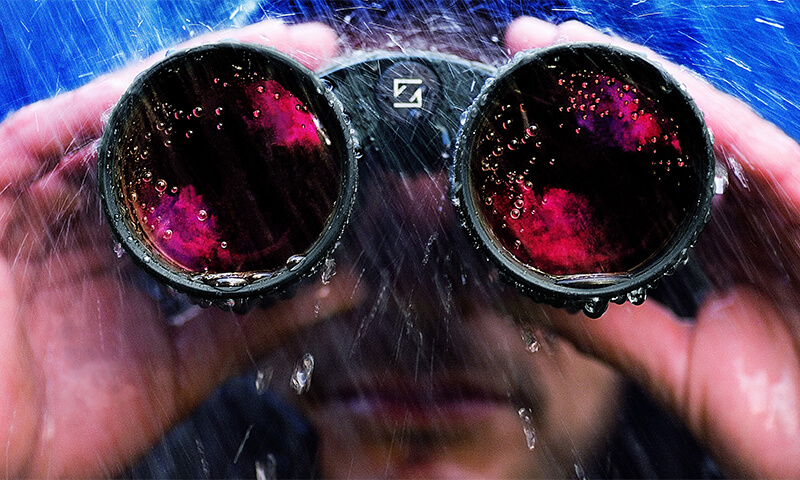
In this guide I’m going to go into some details about binoculars so you can better understand the subject and make the right decision when planning to buy a pair of quality optics.
Because many get stuck at this point due to a wide selection of binoculars available on the market.
Though I already explained many things in my article about choosing binoculars I feel there are still some aspects that I would like to discuss.
I also want to note that there are both cheap and expensive binoculars and I will try to explain when you can buy cheap optics and how they are different from pricey ones.
First of all, when you plan to buy a pair of binoculars you need to do some research in order to learn more about optics and get the recommendation from someone who understands binoculars better than you.

Step 1
Binoculars are different and we buy and use them for a number of reasons. You must choose one depending on the purpose of use.
If you buy binoculars for your children you don’t need to buy too expensive optics. But you definitely should buy from a reliable manufacturer.
Cheap binoculars can harm your children’s eyesight. If you buy for hunting or fishing purposes you better buy waterproof fogproof optics.
If you buy for a general use you don’t need powerful optics. Magnification up to 12x will be an ideal choice.
If you buy for astronomical purposes it’s a different story. Magnification must be at least 20x.
If you buy for viewing distant objects you can buy binoculars less powerful than astronomical optics. Magnification 15x, 16x will fit most of your needs.
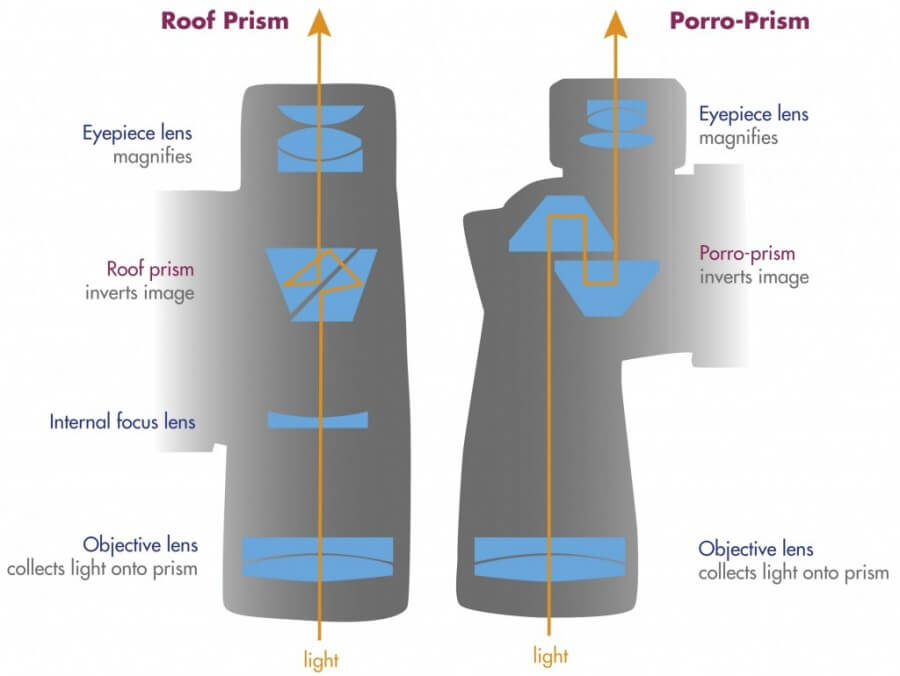
Step 2
For example, there are two types of binoculars available, roof prism binoculars and porro prism binoculars. Which one to choose?
What is the difference between these two types of binoculars?
Porro prism binoculars are usually bigger in size and a little heavier than roof prism binoculars.
If you want a light pair of binoculars then you better choose roof prism optics.
When it comes to quality of the image that these binoculars produce they both deliver quality images, clear, bright and sharp.
But porro prism binoculars produce more 3d scopic image. When you look through such binoculars you feel depth in the image.
When you view a distant object through your binoculars and there are other objects that are closer to you all of them will look clear and sharp though the distance is different between them.
Plus the image will be more interesting and you feel depth of the image.
When it comes to roof prism binoculars the image is also clear and sharp and you still see some kind of depth in the image.
But not as good as you see it in porro prism binoculars. This difference is not HUGE to worry about. If you compare these two images you will see the difference.
Otherwise if you see them separately without comparing then you will even think of it. Nothing to worry about to be honest.
When you adjust the focus of porro prism binoculars you can do it just once and then look through the binoculars to view both distant and close objects.
When you use roof prism binoculars you need to adjust the focus each time for different objects separately.
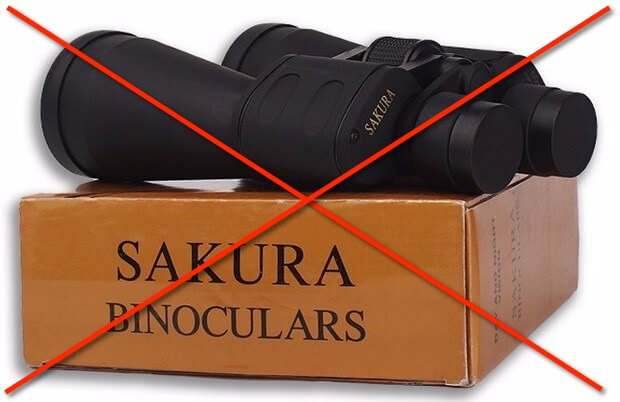
Step 3
You also need to be careful when choosing binoculars because there are many fake ones on the market. I has a chance to test them out and the quality was very bad.
It’s easy to spot them. Very often their price is very cheap and magnification power is very high.
For example, if you see binoculars with magnification such as 10-50×50 or 10-70×50 or 10-100×80 or 60×90 that cost around $30-$50 they are most likely fake and you should avoid them.
Most of the time such binoculars have variable magnification (zoom binoculars). They are ones to avoid.
The image quality in such binoculars is always very low almost useless and magnification power is far from what it’s claimed by the manufacturer.
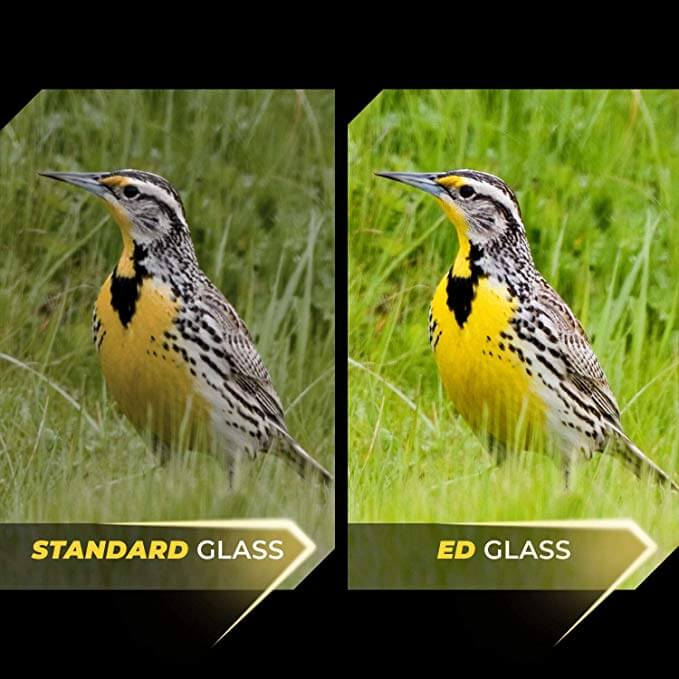
Step 4
Some binoculars have ED glass instead of BAK 4 prism. These type of binoculars are more pricey than standard binoculars.
If a standard BAK4 prism binoculars price is $100, ED Glass binoculars will be between $150-$200 or even higher.
Both binoculars with the same parameters but ED Glass will be more pricey.
I can’t say there is a HUGE difference in the quality of image that these two binoculars produce but there is some difference.
ED Glass optics are more expensive because the material they are made of are of higher quality.
When you choose binoculars I don’t recommend choosing BK7 prism binoculars unless you are on a tight budget.
The image of BAK 4 is always superior to BK7. The image in BAK 4 is more clear, sharp and bright.
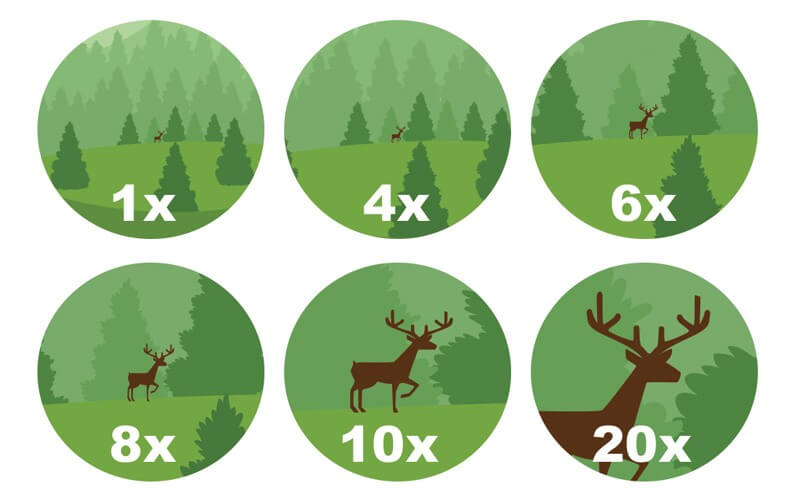
Step 5
Magnification shouldn’t be your main focus when choosing binoculars. Because the higher is magnification power the narrower will be field of view.
If you plan to view close objects, around 10km from you then magnification 10x-12x is a good choice.
If you plan to view distant objects over 10km from you then you need more powerful binoculars such as 15x or 20x.
For astronomical purposes choose magnification 20x or 25x.

Step 6
When it comes to FOV (field of view) there are also two types of binoculars: standard field of view and wide field of view binoculars.
Wide field of view binoculars are more pricey but looking through them is a great fun.
For some people it may be even critical, especially for hunters and that’s why it’s worth paying for this type of optics. You get what you pay for.
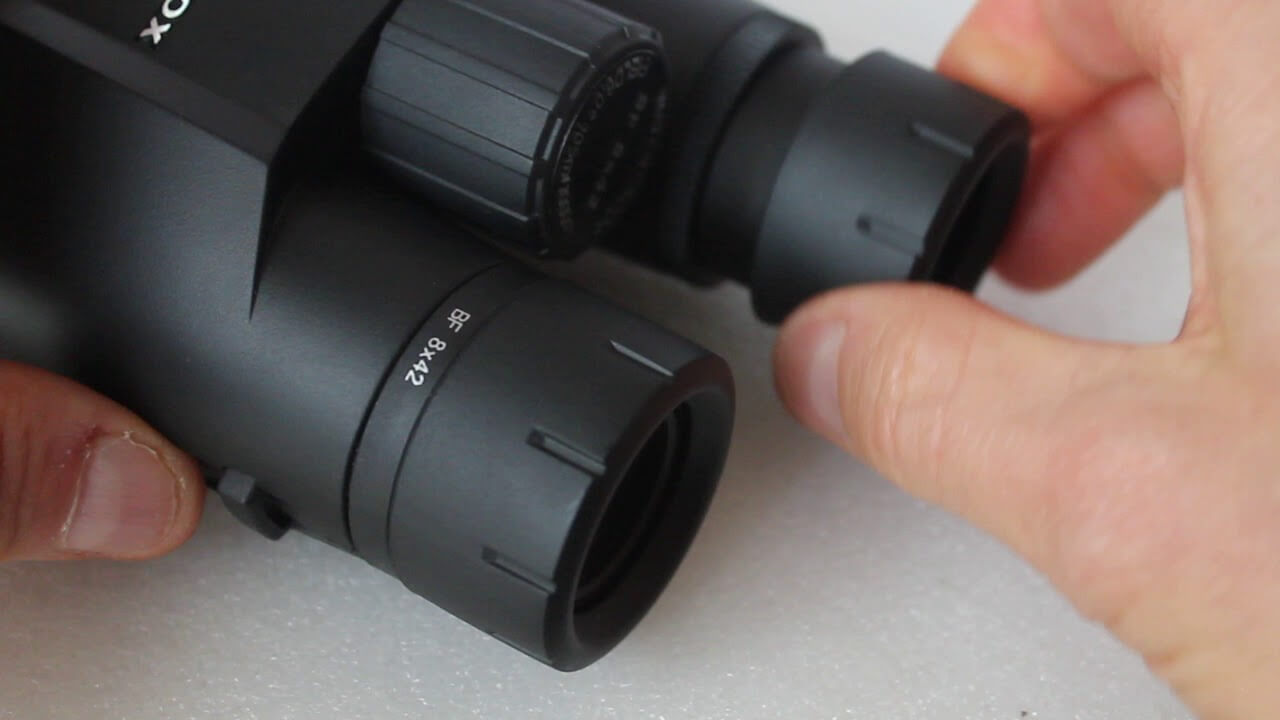
Step 7
Some people ware glasses and don’t know which pair of binoculars to buy.
If you have a serious astigmatism then you probably need to choose binoculars that have longer eye relief, about 15mm.
In simple terms, most modern binoculars normally have eye cups that you can fold up to choose the optimal distance between your eyes and exit pupils of the binoculars.
In the description of the binoculars it’s always said if binoculars are suitable for eyeglass wearers or not.
But most of the time even those that wear eyeglasses can easily use binoculars without eyeglasses.
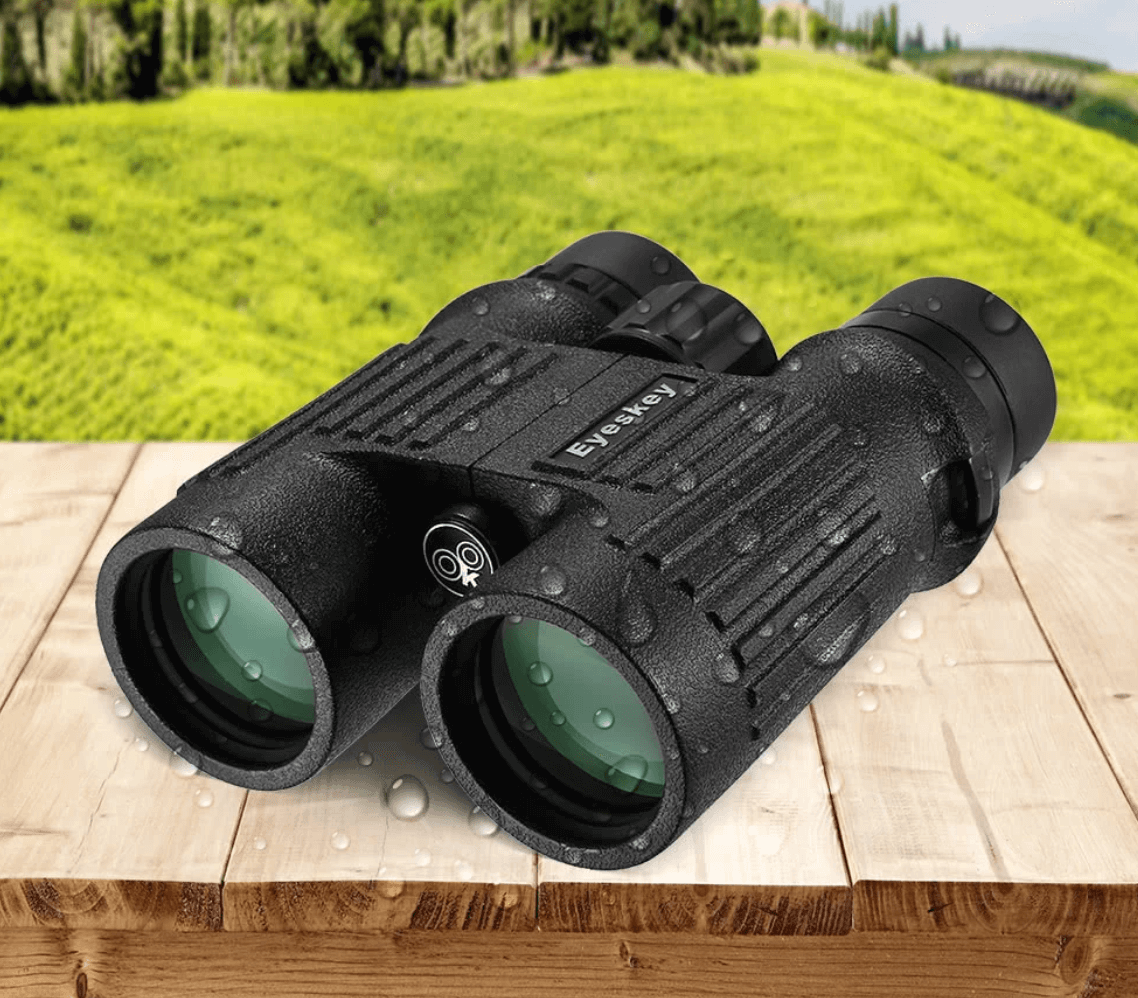
Step 8
Cheap vs pricey binoculars. Most people tend to buy cheap optics only to realize that they have wasted their money.
It’s truth that sometimes you can buy a good pair of binoculars for a reasonably cheap price but most of the time it’s better to spend extra $20 – $30 and buy binoculars from a reliable manufacturer that has years of experience in manufacturing quality optics.
If you buy optics from manufacturers, such as Levenhuk, Leupold, Bushnell, Maven, Vortex, Carson, Swarovski, Celestron, Bresser, Pentax, Vanguard, Wingspan, Nikon, Oberwerk, Orion, you can rest assured that you will get quality optics that will not only never harm your eyesight but will give you a lot of fun.
Remember, if you see two binoculars with same parameters but they differ in price a lot it’s because there is a number of reasons for that.
Expensive binoculars have more quality optics, design, they are waterproof, fogproof, have fully multicoated lenses. You get what you pay for.




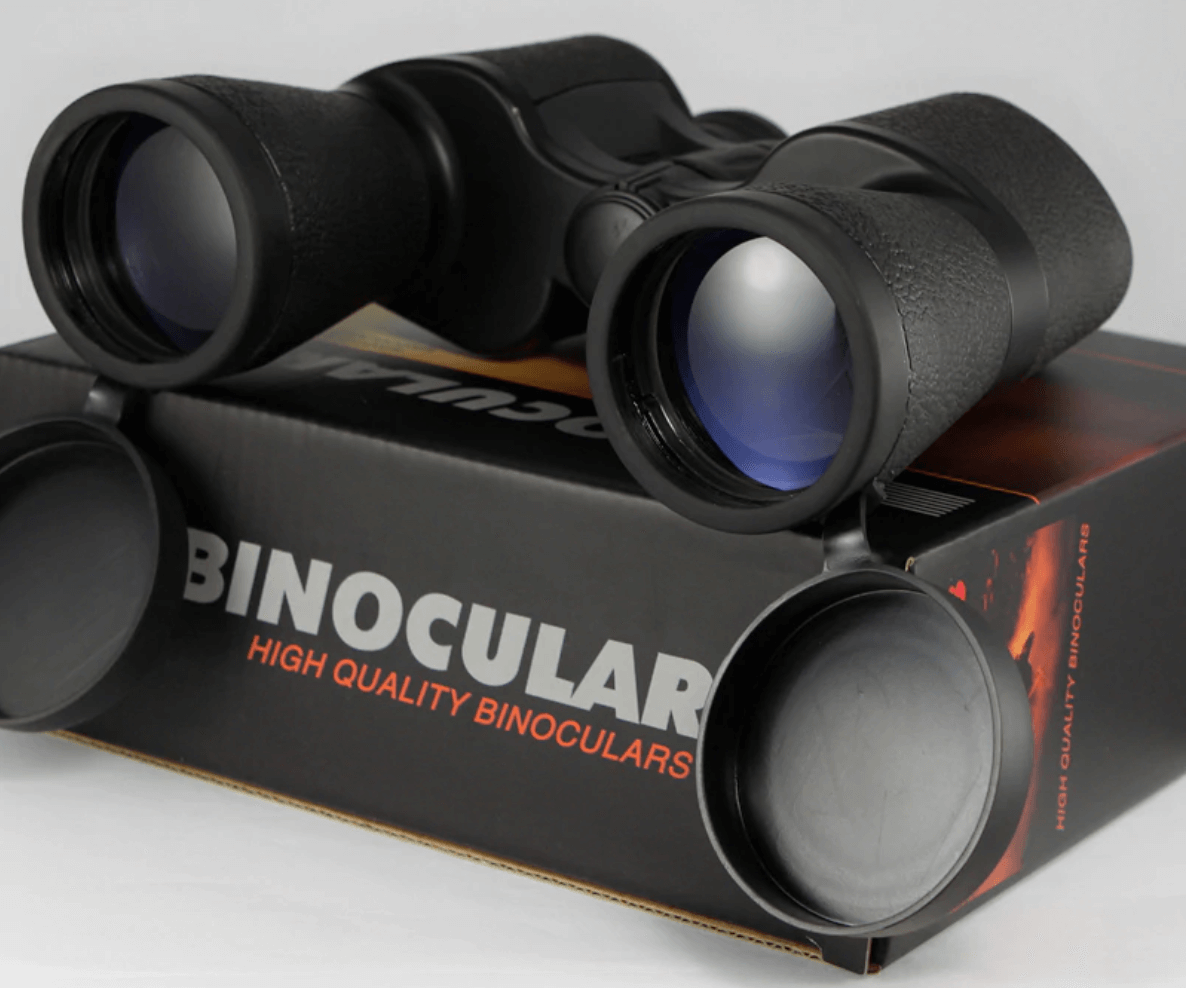
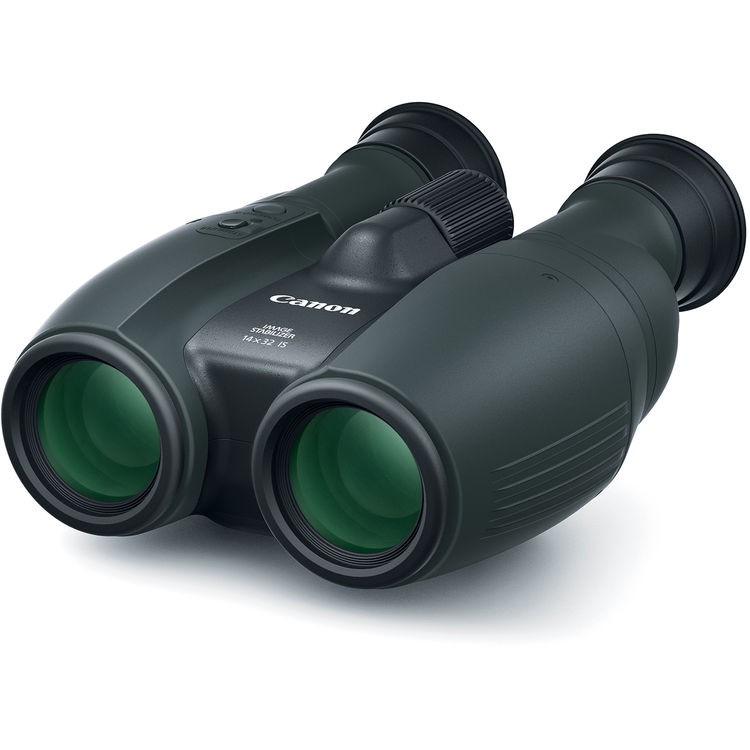
This is so interesting and informative, I would never know there was so much to consider when choosing binoculars.
I like that you advise good quality binoculars for children, parents sometimes think that because items are for their kids use they don’t have to be high quality but I believe they have to be almost a better quality as children’s eyes are fragile and therefore can be more easily damaged.
I like the images you have used to show the differences in magnification.
Can binoculars be repaired? I have a pair that one of the eye pieces no longer adjusts correctly?
Like you when I had zero experience I didn’t know that there were so many things to consider when choosing binoculars. You are right. Even when you buy binoculars for your kids you have to be especially careful to avoid harming your kids’ eyesight. It’s really very important. Normally binoculars for kids have no BAK-4 prism which is used in professional binoculars. They are made of simple optical lens to save children eyesight from excessive eye strain. When it comes to repairing binoculars it’s a complicated question. Some minor issues can be fixed at home while others can’t. There are a lot of videos on this topic on Youtube. You can try it yourself. If you see your issue is above an average minor problem then you better take your binoculars to the expert.
I have to say that whenever I buy binoculars, I just pick one and instantly pay for it. I have never really done research when purchasing binoculars and I just realized from reading this post that doing this might actually not be right for my health. I really had no idea that binoculars could negatively affect my eyes or the eyes of whoever makes use of them.
I now definitely have a clearer understanding of binoculars. I have never made use of an expensive binocular and just only go for those that are cheap. I really hope they have not had any bad effects on my eyes. There are parameters that need to be followed when looking to buy a binocular and up until now I have not known about any of them.
Next time I get binoculars I would definitely make a better decision using the information gotten from this post.
Of course, low quality binoculars from unknown manufacturers can negatively affect your eyes. That’s why it’s recommended to binoculars from well known brands, such as Nikon, Celestron, Bushnell, Bresser, Vortex, Wingspan and the like. If you look binoculars and feel eye strain after 2,3 minutes of use it means your binoculars are low quality optics. You better get rid of such a binocular. You can check binoculars on this page where I listed them all by brand. All of them are high quality optics. If you need any help when choosing or advice let me know and I will gladly help you choose the right pair for your budget.
Hi Adam
This is a really good review. There’s a LOT of information here. There is clearly a lot to know since this is the second article describing the different aspects of binoculars. I read the other one too…SO MANY details…not so definitive. 🙂
Any advice you can give on the body material options. Is carbon fibre being used?
Also, any advice on replacing lenses, especially for these pricey, child-friendly versions?
Cheers,
Dave
Most binoculars have rugged rubber-armored metal bodies or nowadays while others are made of plastic. I prefer rubber-armored. They are very durable and can be used in various conditions. It’s a matter of personal preference actually. Both are durable. If you buy binoculars from a well known brand that has years of experience in optics then you don’t to worry about the body of the binoculars. As far as replacing lens I don’t think it’s possible. Almost all binoculars come with a fixed magnification power. So, there is no way to change lens. But there are some telescopic binoculars that allows you to change lens but they are very pricey.